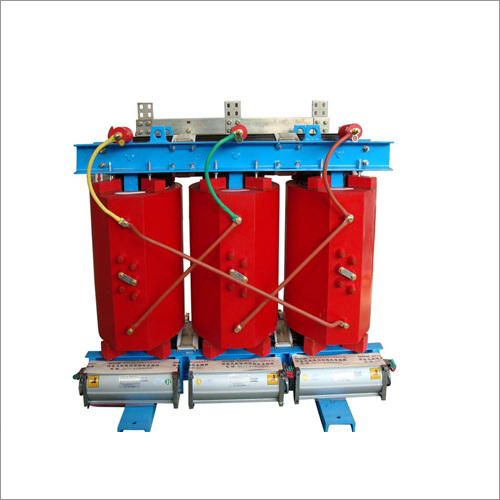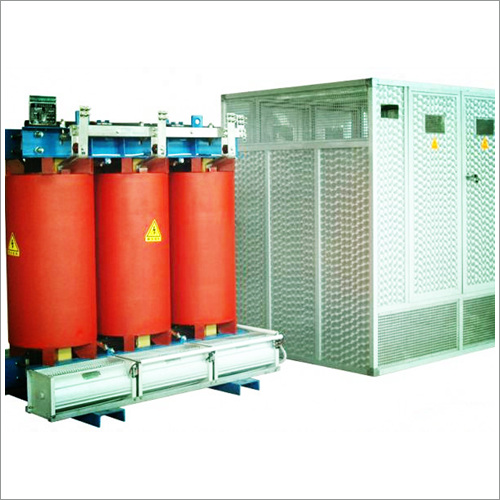In the new century, with the improvement of national environmental protection requirements such as fire safety, degradation of waste materials after the end of transformer operation life, and the trend of national specific environmental protection policies in the future, H Class a dry-type transformer will form strong competitiveness in the future market competition with its advantages in environmental protection. Therefore, on the one hand, it is favored by manufacturers, on the other hand, it also gives users a more choice. I believe that in the near future, it will be more and more popular with large users, and even occupy part of the market of traditional dry-type transformer. This kind of transformer technology is the future development trend of China, and will have a very broad development prospect in the future

Dry type transformer shall meet the following requirements:
a) When the transformer is installed in parallel with the low-voltage distribution cabinet, the protection level of its shell shall not be lower than IP3X, and it shall not be lower than IP2X when installed separately;
b) There is no spark discharge trace on the surface of iron core and bushing;
c) There is no damage or crack on the outside of bushing and insulator;
d) The casting body of transformer winding has no crack and dirt;
e) There is no serious contamination on the surface of iron core and bushing;
f) The sound of transformer is normal.
Future development direction:
(1) Energy saving and low noise: the introduction and development of new materials, new processes and new technologies, such as low loss silicon steel sheet, step stack iron core seam, foil winding structure, in-depth noise research, environmental protection requirements, computer optimization design, will make the future dry-type transformer more energy-saving and quieter. However, it is not advisable to reduce iron loss or copper loss only by material input.
(2) High reliability: the operation reliability of electrical products, especially transformers, is particularly important. A lot of basic research on electromagnetic field theory and its calculation, wave process, pouring process, hot spot temperature rise, partial discharge mechanism, quality assurance system, reliability engineering, etc., and actively carrying out reliability certification to further improve the reliability of dry-type transformer will be people's unremitting pursuit.
(3) Environmental characteristics certification: Based on the European standard HD464, the research and certification of dry-type transformer's weather resistance (C0, C1, C2), environment resistance (E0, E1, E2) and fire resistance (F0, F1, F2) characteristics are carried out.
(4) Large capacity: the capacity of distribution transformer is usually below 2500kVA. With the continuous increase of urban power load, the regional substation of urban power grid is more and more deep into the urban central area, residential area, large and medium-sized factories and mines and other load centers. The 35kV large capacity regional power supply dry-type power transformer will be widely used. Shunte has produced nearly ten 35kV 16000 / 24000kva super large capacity dry transformers.
When the transformer is in operation, the temperature rise limit of the core depends on the Curie temperature of the silicon steel sheet material, and is limited by the high temperature resistance of the insulation coating on the surface of the core silicon steel sheet. The surface of oriented electrical steel products are coated with a layer of inorganic insulation coating, which has excellent coating characteristics: high interlayer resistance, ensuring good interlayer insulation; excellent punching performance, close combination of coating and substrate, good adhesion, preventing coating from falling off during processing; uniform and thin surface coating, excellent lamination performance, i.e. high lamination coefficient; high heat resistance The coating can withstand annealing at 800 ℃ without being damaged; it has good corrosion resistance and is incompatible with cooling oil, insulating oil, machine oil, freon, antifreeze oil and so on.

A closed oil tank is set in the large and medium capacity power transformer, which is full of transformer oil. The winding and core of transformer are immersed in transformer oil to achieve better heat dissipation effect. Each winding in the transformer is led out by the insulating sleeve and connected with the external circuit. The transformer is mainly composed of the following parts: voltage regulator, body, outlet device, oil tank, protection device and cooling device. Its voltage regulating device is divided into on load voltage regulating device and no-load voltage regulating device, which is essentially a tap changer; the body is composed of lead wire, iron core, insulation structure and winding; the outlet device is composed of low-voltage bushing and high-voltage bushing; the oil tank is composed of some accessories (mainly including oil sample throttle, nameplate, oil drain valve, grounding bolt and trolley, etc.) and the body (mainly including oil tank) The protection device is composed of moisture absorber, gas relay, oil conservator, oil slicker, oil level gauge, temperature measuring element and safety air passage; the cooling device is composed of cooler and radiator.


